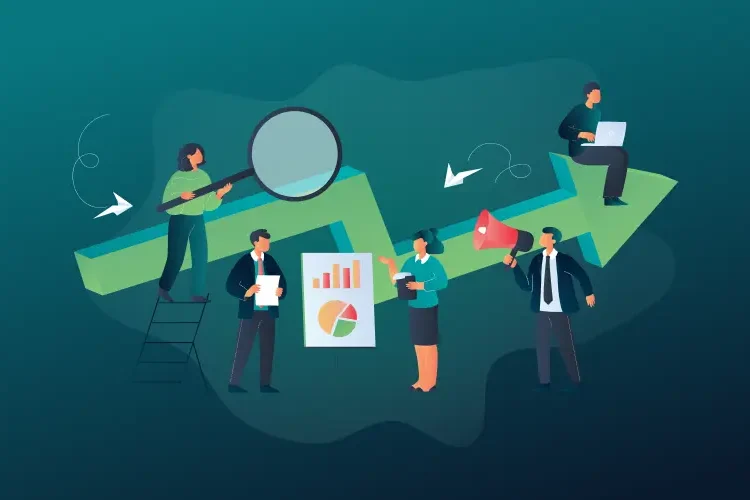
You already tried to run paid advertising campaigns for your B2B SaaS business but had no success? Perhaps you went by false assumptions and launched campaigns on ad networks that aren’t meant for a B2B audience, such as TikTok, Pinterest, or Instagram. Or you simply didn’t fully understand how paid marketing ads, metrics, and different ad network options work.
However, if your business could use some extra help, you can always hire a B2B SaaS PPC Agency to improve your strategy and kickstart your company’s success.
In this post, we’ll share with you the paid marketing strategies, tactics, and optimization tips suitable for B2B SaaS businesses that will help you grow your customer base with profitable CAC and boost customer Lifetime value!
Let’s get started 👇
5 Common Mistakes in B2b SaaS Paid Advertising
Before we get into the strategies and tactics, we’d like to point out the most common mistakes we noticed when working with 50+ B2B SaaS companies.
- Not starting with the company’s big picture goals
Your paid advertising strategy should be centered around big-picture goals. That implies activities around analyzing your ICP, current customer data, comprehensive competitor research, market behavior, product-led and sales-led process adjustments, and many other factors. - Not aligning with product and sales teams
If there’s no proper alignment between product and sales teams, it will be very hard to understand current pipeline conversion rates, how to create proper benchmarks such as cost per lead, MQL to SQL ratios, how to improve adoption during the free trial period, and many other processes that are crucial to converting more leads from paid marketing campaigns. - Not understanding B2B SaaS metrics
One of the common problems companies are facing is data enrichment. That means you should have as much data as possible from marketing campaigns so that you can calculate the actual ROI metrics. The most common metrics for B2B SaaS companies are: customer acquisition cost (CAC), net new MRR, customer lifetime value, CAC payback period. If you’re driven just by sign-up metrics, you’ll not be able to create a long-term customer acquisition strategy that relies on ROI data. - Wrong messaging
You should expect very poor audience engagement if your ads and landing pages do not deliver a clear message. The most common mistake that B2B SaaS businesses make is emphasizing communication features over benefits, or what software does vs what outcomes the user might achieve. - Lack in conversion rate optimization
If you don’t test enough in your funnel and on landing pages, you’ll probably fail to obtain reasonable results from A/B test experiments, and you’ll be stuck attempting to figure out what and where to improve. Maybe you’re doing great targeting in Google Ads and your campaigns are driving high-quality traffic to your landing pages. On the other side, the problem could be with your sign-up forms, registration process, or even user onboarding, which is where your potential customer should get the most value during the journey.
How to Create an Effective PPC Marketing Strategy for B2B SaaS?
Below, we’ll walk you through how to correctly build a paid marketing strategy for your B2B SaaS. By completing each phase, you will increase the likelihood of success and make your campaigns drive actual ROI.
Start with fundamentals
Your customer acquisition strategy is the result of comprehensive research into your ideal customer persona (ICP), competitor’s campaigns, market behavior, your current sales process, your product roadmap, and your company’s vision. Once you’ve aligned and integrated those critical components, you should move on to the next step: research.
Research phase
Start by conducting in-depth research on the most suitable keywords you wish to target using Google Ads or Bing. Perform necessary keyword research, including search volume, estimated CPC, keyword trends, keyword intentions, and so on. Ideally, you may develop formulas to calculate all of this data in order to determine the best keyword to target.
Enter this data into the spreadsheet.
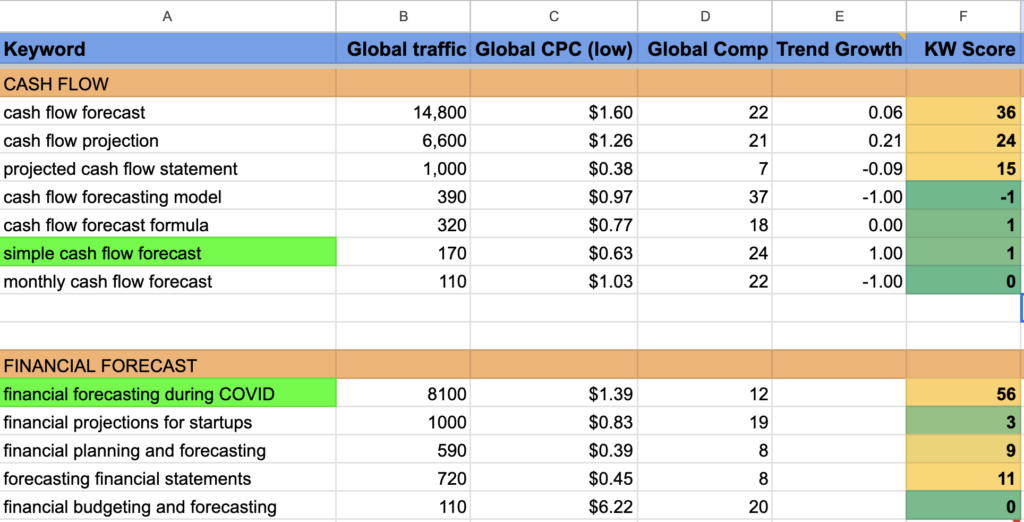
In parallel with keyword research, begin conducting audience analysis on LinkedIn and Facebook, and plan the best targeting strategy on these ad networks. You should also enter all relevant interests and demographics into the spreadsheet.
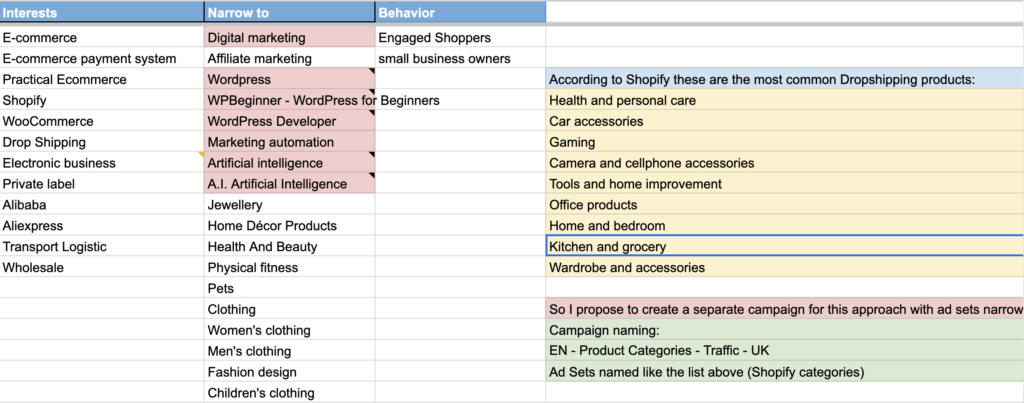
Competitor research. One highly effective method for gaining an edge over your competition is thorough research of their paid marketing strategy, which includes their ads, landing pages, and funnels. You can get great ideas and inspiration by examining your competitors’ ad strategies.
The main objective of the research phase should be to determine how to target the right people, on the right ad network and get high-quality traffic. You should use techniques such as LTV: CaC projection, negative keyword additions, and n-gram analysis to expand your markets while reducing ad spend.
Ad creatives and landing pages
Prepare your copywriting and visual content for ad creatives and landing pages. This is where you need to stand out from the competition and position your product for a targeted audience. Start with a direct-response framework that incorporates the brand’s tone of voice, USPs, value propositions, and so on.
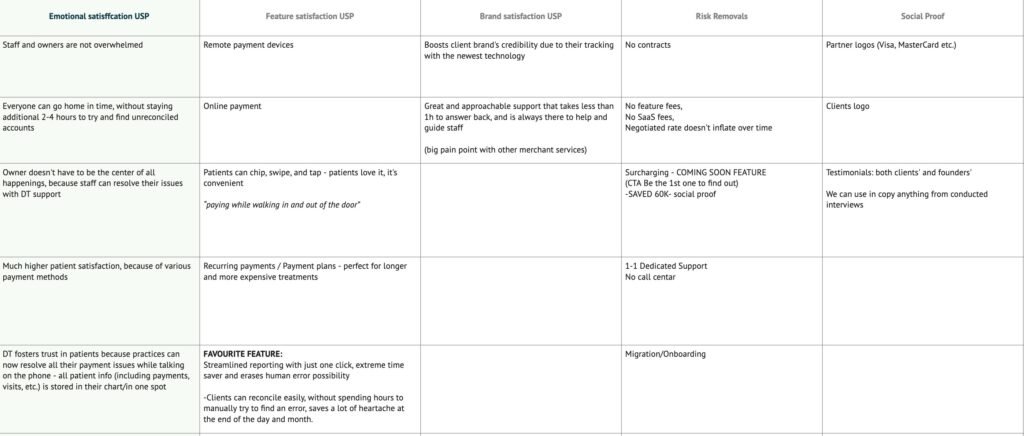
Make sure your landing pages contain all the necessary components, including a great hero section, optimized sign-up or demo forms, social proofs, client testimonials, a benefits section, and industry recognitions. If you want to learn more about creating a high-converting B2B SaaS landing page, check out our in-depth guide here.
Analytics & performance tracking
Setup marketing analytics & revenue attribution so you know you’re basing your decisions on the correct data. You can utilize various analytics and attribution tools, such as: Mixpanel, Amplitude, Hubspot, Hockey Stack, Metabase, and so on. Read our best list of attribution and product analytics tools.
Create a detailed tracking plan specification that includes all of the information about which user attributes, events, and properties should be delivered to which tool and ad channel.
![]()
Campaign structuring
Structure your campaigns. Proper campaign structure will help you have a clear idea of who you are targeting, what you are targeting, and which ad network. Structured campaigns will also allow you to manage and optimize paid ads with greater ease and scalability.
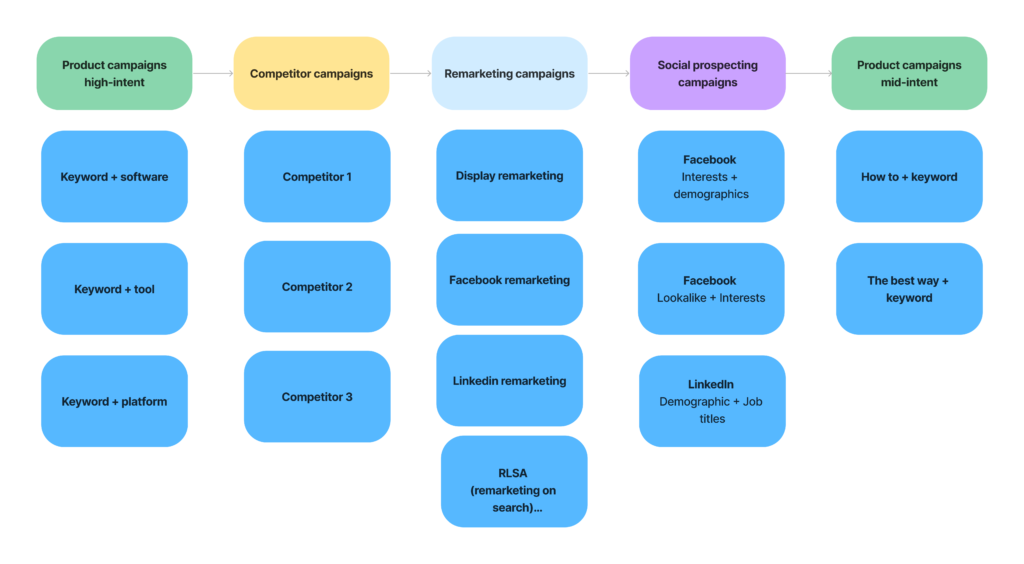
Launch full-funnel campaigns with integrated marketing strategies. If you successfully complete all the above steps, you’ll be ready to launch fully integrated paid advertising campaigns and increase your chances of getting positive outcomes.
10 B2B SaaS PPC Tactics Breakdown
Here is a list of proven tactics we used on our clients’ projects that resulted in lower CPA and more high-quality leads in the sales pipeline.
1. Focus on Ad networks Strictly For B2B Tech
Whether you’re aware of it or not, paid search marketing has massive potential for B2B tech companies, although this type of advertising comes with its own set of challenges. One problem is that the B2B audience is much smaller and more demanding than the B2C audience.
This means that there are fewer searches and more competition. But you also have an advantage: unlike social media, where customers react on impulse, you are targeting an audience that is proactive in its search for solutions and products. However, the challenge is to stand out among the other options your B2B audience is considering.
2. Create Lead Generation With Specific Targeting
When you think of other ad channels to advertise on, you usually think of Instagram or TikTok, but those are not the networks where B2B audiences are engaged. Instead, it’s better to consider SaaS software directories such as Gartner Network (including Capterra, Getapp, and SoftwareAdice,) G2, ProductHunt, Technology Advice, and others. We collected a list of SaaS directories for ease of use.
3. Implement Video in Paid Ads Campaigns
Video content is one of the most powerful and effective marketing tools today. It can clearly show your product or service, which is why it’s perfect for paid marketing strategies. Videos are eye-catching and fairly simple to create if you have a smartphone or a camera at hand. The best result is achieved with videos up to one minute in length, and they can be used on Facebook, LinkedIn, and YouTube.
4. Target B2B Behaviors And Demographics On Social Media
PPC advertising will allow you to improve the performance of paid ads if you do the following:
- You should determine specific themes and sub-themes for different ad groups and implement several closely related keywords. This way, it will be easier to optimize the performance during the campaign.
- Use the negative keyword technique to your advantage, and ensure your ad campaign doesn’t get displayed to users that are not interested in it. If you apply a robust list with negative keywords, this will reduce any irrelevant traffic and save you money.
- You can use keyword match types to manage which Google searches will result in an advertisement. It is shown to a large audience using broad matching and broad match modifiers. However, if you want to use particular keywords and phrases to get the advertisement in front of consumers, it’s best to use Phrase and Exact matching.
- Keep an eye on and improve search impression share (SIS) because a high SIS signals to Google that an advertiser’s online advertising is more relevant and of higher quality. It is based on targeting, approval status, budget, bids, and quality score.
5. Create Lookalike Audiences
If you want a significant advantage over the competition, you should target groups you can identify as lookalike audiences. It’s a great way to reach new people based on their similarities to your current consumers, which ensures that they might be interested in the offer.
You can identify them by several factors, including your existing customer list, specialized events, and website behavior.
Creating lookalike audiences using MQL and SQL leads can be a very effective method.
6. Segment Your Remarketing Audiences
You can significantly improve your marketing campaign’s overall performance if you segment your target audience correctly. Multi-layered targeting is very fruitful, and you should use cross-reference demographic and target segments, along with behavioral, geographic, and psychographic data.
By doing this, you can find the less obvious parts and send the right message to the right people at the right time.
Remarketing audience segmentation tips:
- Low intent – all website visitors, blog visitors
Medium intent – sign-up page visitors, pricing page visitors, multiple page visitors
High intent – free trial sign-ups, product qualified leads, marketing qualified leads
Remarketing advertising tip:
- Tailor your ad message, landing page, and offer by intent phase.
7. Improve Your Landing Page Experience
The vast majority of pay-per-click marketers underestimate the importance of post-click optimization. If you want to improve the probability of having a successful paid marketing campaign, you should have a landing page that is optimized for conversions. This means incorporating several things. Use relevant keywords and a strong, well-written call to action to get the most out of your work and ensure people can easily find their way around your website.
8. Offer a Free Trial or Free Account Instead of Booking a Demo or Purchase
Giving new customers free trials is the best way to help them understand what a product is worth and “de-risk” their purchase. They will provide customers with a first look at a product and demonstrate how it can address their issues.
A free trial demands a lot of setup and configuration effort from the consumer. But the best thing about it is that it gives them an excellent introduction to the product and allows them open access to the information they need to decide whether to buy.
9. Understand B2B Customer Metrics
Understanding the key B2B customer acquisition metrics that will impact your PPC campaigns is essential.
Here are some of the things to keep in mind:
- Cost per click (CPC): How much you’ll pay for each click on your ad. The CPC will be determined by the competitiveness of your keywords and how well your ad performs.
- Click-through rate (CTR): It represents the percentage of people who click on your ad after seeing it. A high CTR means that your ad is relevant and effective.
- Conversion rate: This is the percentage of people who take the desired action after clicking on your ad. A high conversion rate means that your ad is effective at driving conversions.
- Cost per acquisition (CPA): The amount you’ll pay for each customer acquired through your PPC campaign. Your CPC, CTR, and conversion rate will determine the CPA.
10. Be Aware Of Attribution And Decision-Making Processes
It is also essential to understand the role that attribution and decision-making play in the execution of a successful campaign. By understanding how these processes work, you’ll be able to allocate resources more effectively and make decisions that will improve your chances of success.
The first step in any attribution process is identifying the campaign’s goals. Once you know the goals, you can begin identifying the key performance indicators (KPIs) that will help you measure success. Then, you can start tracking your campaign’s progress and make changes as needed.
Finally, it’s important to remember that attribution doesn’t happen in a vacuum. You need to consider your campaign’s different channels, like search, display, social media, and email. As a result, we created a comprehensive guide on B2B marketing attribution.
Conclusion
In summary, growing your B2B tech business with paid marketing campaigns is a complex task that demands careful preparation and execution. The trick is to choose the correct ad networks, those that B2B tech audiences use frequently: Google Ads, LinkedIn, Microsoft Ads, and Meta.
Understanding and targeting your audience’s individual behaviors and demographics is a vital component as well. This approach, when paired with the development of lookalike audiences and segmented remarketing audiences, has the potential to greatly improve the success of your paid marketing activities. The goal is to reach the right people with the appropriate message at the right time.
Furthermore, refining the experience of your landing page and creating appealing CTAs are critical for turning clicks into conversions. Instead of immediately pressing for a purchase, offering free trial period can be a more successful method to engage potential customers.
At the end, understanding important customer metrics such as CPC, CTR, conversion rate, CPA, CAC (Customer acquisition cost), and MRR (monthly recurring revenue) is essential for determining the performance of your PPC ads campaigns.
Author
Jovan
Creating growth strategies for B2B SaaS products is one of my specialties. Over the last seven years, I've worked closely with a number of SaaS founders, VPs of marketing, and marketing managers to help them scale their businesses faster by applying growth marketing approaches. Goals. Grow and expand the agency to help even more B2B SaaS businesses.






